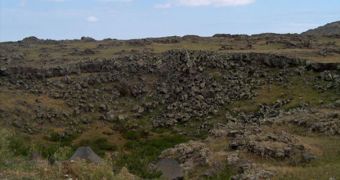A team of experts believes it may have discovered a new impact crater atop Mount Ararat, the biblical mountain on which Noah's Ark is believed to have come to rest. The feature may have been produced millions of years ago.
The discovery was made by two physicists that somehow got access to a part of the mountain that is closed to the general public. Both the northern and western slopes have restricted access, imposed by authorities.
Mount Ararat is located in eastern Turkey, near the borders with Armenia and Iran. The political situation in the are is unstable, and this is one of the main reasons for the restrictions.
But the landscape feature has attracted a lot of interest in the past, due to the fact that this is where the Bible tells us that Noah's Ark got stuck after the flood. No expeditions to the area have ever found even the slightest signs that the ship exists.
Despite the restrictions place on the mountain, researcher Vahe Gurzadyan, who is based at the Yerevan Physics Institute in Armenia, and Sverre Aarseth, who holds an appointment at the University of Cambridge in the United Kingdom, managed to investigate the area.
The team reports the discovery of an interesting, well-preserved crater at an altitude of 2,100 meters above sea levels. The spot is located at coordinates 39˚ 47' 30''N by 44˚ 14' 40''E, Technology Review reports.
According to the account, the landscape feature is some 70 meters across, and is in nearly-perfect shape. Unfortunately, the structure cannot be observed via Google Earth, since the resolution of images available for the area is very poor.
The team believes that the crater may have been produced by a space impact, although they add that volcanic activity has not yet been ruled out completely as a factor. They add however that glaciers couldn't have produced the feature.
The researchers published their findings in the online journal arXiv in order to create interest in the scientific community. They hope other experts will be interested in studying and classifying the crater.
Such studies are very important because they provide insight into our planet's history. Crater impacts may allow researchers to understand Earth's troubled past in more detail.

 14 DAY TRIAL //
14 DAY TRIAL //